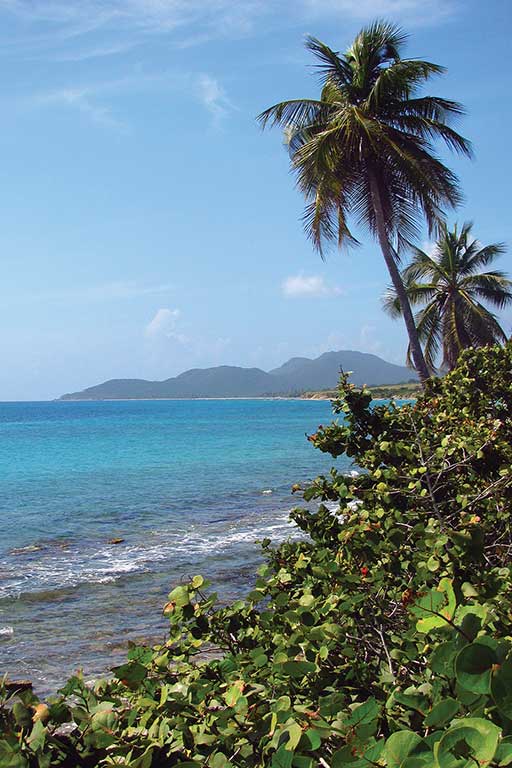In 2013, Vieques’ world-renown bioluminescent Mosquito Bay went dark. It was a shocking turn of events that set the entire tourism industry—which constitutes the only industry on the island—on edge. Theories about what caused it included global warming, shifting tides, silt run-off, and pollution. In early 2014, the National Guard arrived and cleared debris from 10 acres around the lagoon, and by the end of the year, the glow had begun to return. It was a chilling reminder of the importance of protecting this remarkable natural phenomenon.
So just what is it that makes the bioluminescent lagoon in Mosquito Bay glow?
Mosquito Bay is touted as one of the most spectacular bioluminescent bays in the world because of its high concentration of dinoflagellates and the absence of pollution and ambient light.The mangrove bay’s rich nutrients and clean, warm water create the perfect environment for sustaining the zillions of microscopic organisms called dinoflagellates that wash into the bay during high tide and remain trapped there when the tide recedes. The single-celled creature is unique in several ways. For one, it contains properties similar to both plants and animals. But more notably, when it senses motion, it experiences a chemical reaction that creates a burst of light not unlike that of a firefly.
Vieques features miles of deserted beaches and bright blue water. Photo © Suzanne Van Atten.
Puerto Rico is said to have as many as seven bays rich in dinoflagellates, although only three are commonly known: Phosphorescent Bay in La Parguera on the southwest coast of Puerto Rico, Laguna Grande in Fajardo on the east coast, and Mosquito Bay in Vieques. Mosquito Bay is touted as one of the most spectacular bioluminescent bays in the world because of its high concentration of dinoflagellates and the absence of pollution and ambient light. Because darkness is required to see the glow, the best nights to tour the bay are when no moon is visible.
Before April 2007, when the Department of Natural Resources banned swimming in the island’s bioluminescent bays, the highpoint of kayak trips into the bay came when visitors were permitted to jump in and frolic in the bathtub-warm water, where they could swim, turn flips, and create water angels in the electric-blue drink. Now visitors have to content themselves with watching the boat’s blue wake and spotting brightly lit fish trails skim through the waters. It’s not quite the same, but it’s a small price to pay to help preserve the dinoflagellates. A visit to Mosquito Bay is still a magical experience unique to Puerto Rico.
Excerpted from the Fourth Edition of Moon Puerto Rico.